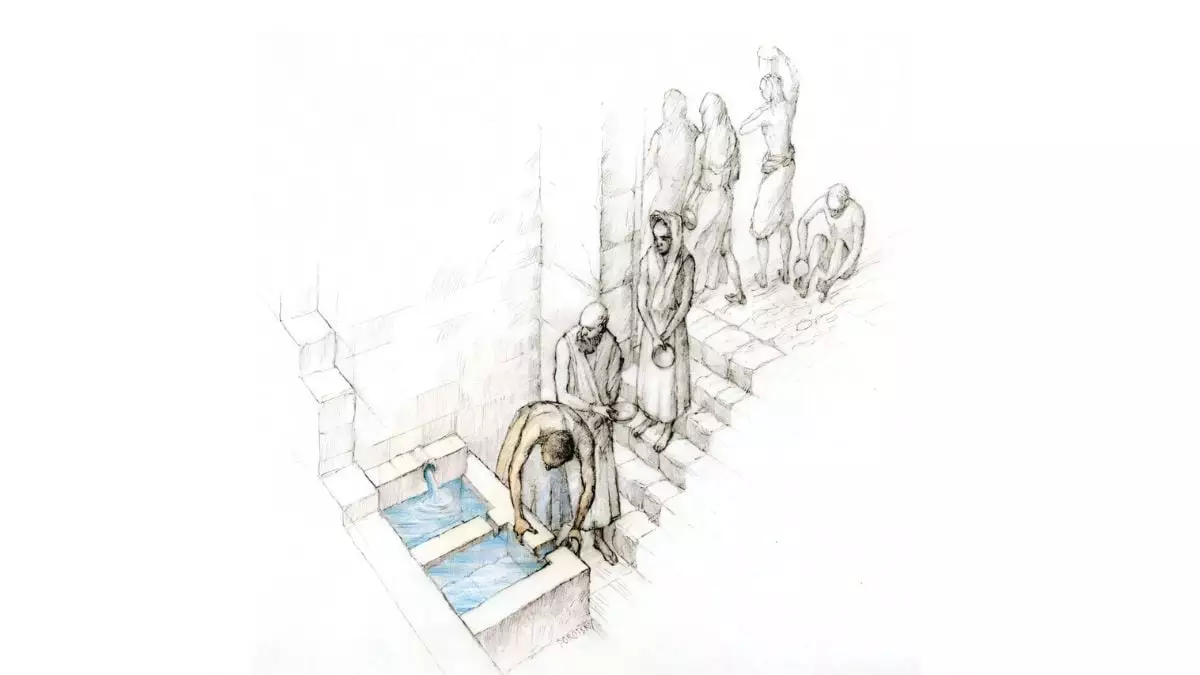Recent archaeological endeavors in northern Israel have unveiled a breathtaking revelation that enriches our comprehension of ancient religious customs. This newly discovered sanctuary, dating back to the kingdom of Israel, highlights the significance of ritual cleansing as an integral part of worship. Imagine a site where priests meticulously engaged in purification rituals, embodying a culture deeply intertwined with their deities. The insights gleaned from this site challenge us to reconsider the relationship between ancient peoples and their understanding of divine cleanliness.
The Architectural Marvels
At the heart of this site lies a self-contained bathhouse, an architectural feature that showcases the sophistication of the ancient Israelite priestly class. The dual spaces within the bathhouse—a dressing area adorned with yellow plaster and a blue-plastered basin—suggest not just utility but a profound reverence for the act of purification. Unlike typical full-immersion baths, the basin’s modest size and lack of heating imply a more pragmatic approach; worshippers likely used cold spring water flowing from nearby outlets, contributing to a communal atmosphere of reflective cleansing. This ingenious design compels us to appreciate the nuances of ancient ritual that sometimes elude modern interpretations.
Rituals and Cultural Significance
As scholars delve deeper into the sanctuary’s multifaceted layers, the insights extend beyond mere physical structure. Dr. Levana Tsfania-Zias’ report in “Levant” establishes that ritual cleansing was more than a routine; it represented a deep-seated cultural belief reflecting the people’s devotion and spiritual aspirations. The records hint at a larger ritualistic framework within which the local deity was worshipped, emphasizing the specificity of regional variations in religious observance. Such particulars remind us that spirituality is rarely uniform; instead, it molds itself to the customs and beliefs of localities.
A Testament to Evolving Faith
The sanctuary’s storied past, including the transition from the first temple—destroyed by the Seleucids—to the erection of a new temple, illustrates how religious practices adapt yet endure. The preservation of bathing rituals through centuries serves as a testament to the enduring nature of faith, even amidst political and social upheaval. This continuity of practice speaks volumes about how the community sought both comfort and connection through sacred rites, providing a glimpse of resilience in their belief system.
A Broader Spiritual Landscape
Continuing exploration may unlock further mysteries of this site, but the preliminary findings already suggest it was a vibrant spiritual hub. Imported ceramics and inscriptions in multiple languages hint at a far-reaching allure, attracting both locals and international pilgrims alike. The diverse nature of this sanctum challenges the traditional narrative of insular ancient cultures, suggesting instead a lively exchange of beliefs and practices. It’s a call to understand that religious landscapes are often more intricate than they appear at first glance, resonating with the complexities of cultural identity.
In essence, this archaeological find offers us not merely artifacts of the past but a doorway into the spiritual life of ancient peoples. Such discoveries compel modern observers to reflect on the timeless human pursuit of purity, connection, and the transcendental.


Leave a Reply